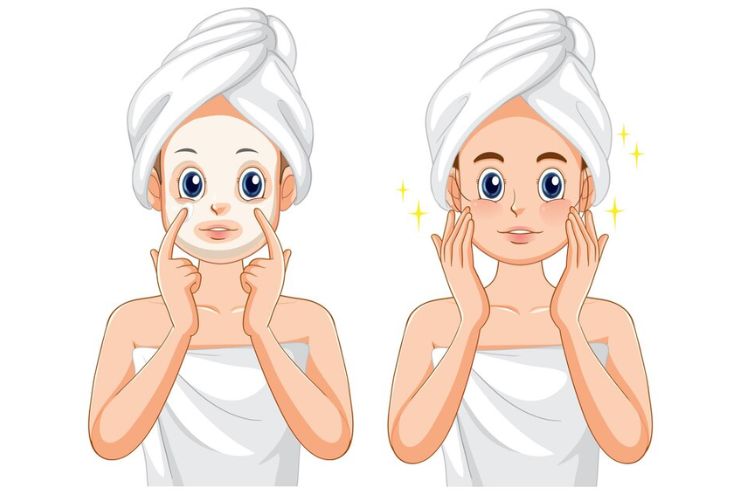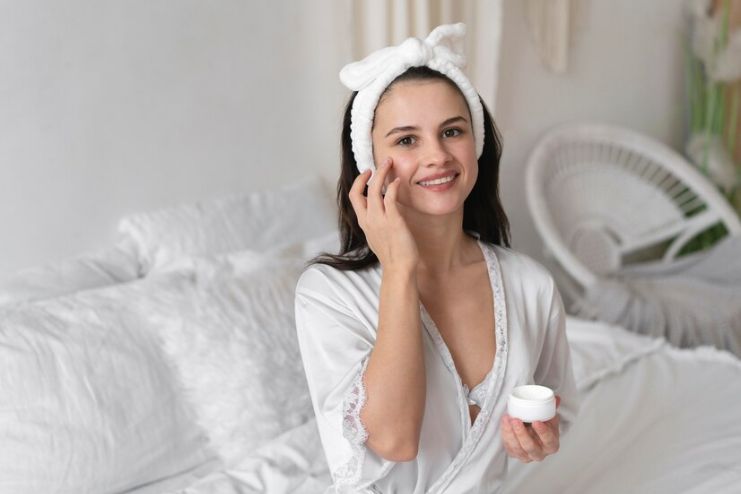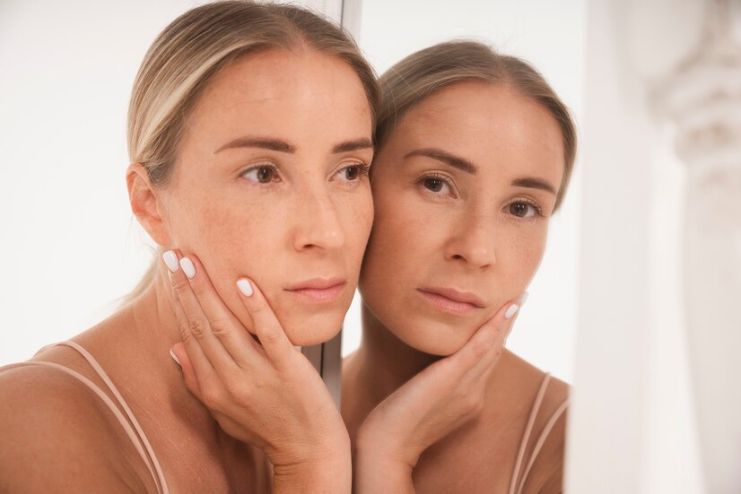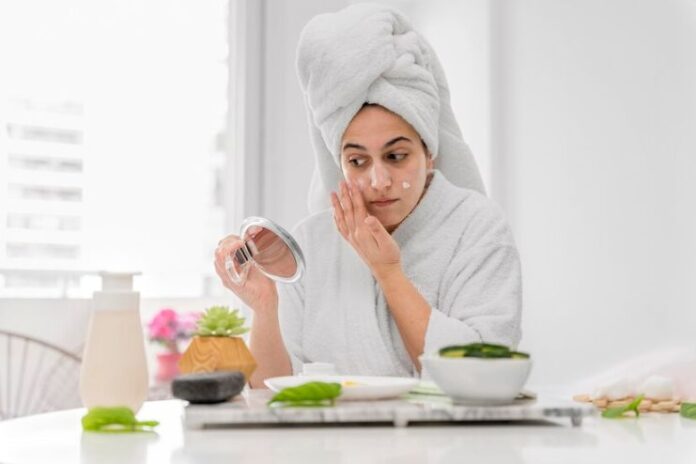Affiliate Disclaimer
Some links in this article are affiliate links. We may earn a small commission if you make a purchase through these links, at no extra cost to you. We only recommend products we find useful to our readersWhen it comes to skincare trends, skin cycling has proven to be a game-changer! Many people have embraced this routine, often influenced by social media and TikTok, but the reasons behind its popularity are compelling. This method not only simplifies the skincare process but also encourages healthy, glowing skin.
Endorsed by dermatologists such as Dr. Whitney Bowe, this skincare method amplifies the benefits of active ingredients without negatively impacting your skin. It’s a strategy that maximizes the benefits of active ingredients without overwhelming your skin.
Curious to know if it is worth all the hype? Then you are at the right place. This article will help you understand skin cycling and its benefits, the nightlyly routine, and much more. Let’s dive in and learn more!
What Is Skin Cycling?

Skin cycling is a 4-night skincare routine designed to alternate between exfoliation, retinoid application, and recovery. This structured method ensures that active ingredients are used effectively without overwhelming or irritating the skin.
Your dermatologist may recommend a different cycle based on your skin’s response, but here’s the general breakdown:
- Night 1: Exfoliation
- Night 2: Retinoids
- Nights 3 & 4: Recovery
To get started with skin cycling, you’ll need:
- A chemical exfoliator – such as glycolic acid or salicylic acid
- A retinoid – you can try retinol or retinaldehyde
- A moisturizer – a fragrance-free ointment or cream
How Skin Cycling Works – A Night-by-Night Guide
Now let’s look at a detailed night-by-night how-to guide on a classic skin cycling routine:
Night 1: Exfoliation
On night 1, you focus on exfoliation to remove dead skin cells from the surface of your skin and unclog pores. This prepares your skin for the next phase and allows for easier absorption of other products in a predictable and controlled manner.
Use AHAs or BHAs, such as glycolic or salicylic acid, which are gentle chemical exfoliants.
Products We Love:
- The Ordinary Glycolic Acid 7% Toning Solution
- Paula’s Choice Skin Perfecting 2% BHA Liquid Exfoliant
Pro Tip: Stick to chemical exfoliants as physical scrubs can be harsh on your skin.
Night 2: Retinoids
This night involves applying retinoids, such as retinol or tretinoin, to your skin. Retinoids are vitamin A derivatives that help reduce fine lines and wrinkles, making them one of the most powerful ingredients in a skincare routine.
Apply a retinoid product after washing and drying your face.
Products We Love:
Pro Tip: Always apply sunscreen every morning and reapply throughout the day, as retinoids can increase your skin’s sensitivity to the sun.
Nights 3 and 4: Recovery
Nights 3 and 4 are the recovery periods and your final step. This step is essential for nourishing your skin microbiome and repairing your skin barrier. Recovery nights focus on moisturizing and using serums that strengthen the skin barrier.
Hydrate and nourish your skin with ceramides, hyaluronic acids, and peptides.
Products We Love:
Why Skin Cycling Works

Skin cycling works because it maintains a balance between exfoliation, retinoid use, and recovery. Traditional skincare regimens often overwhelm the skin with active ingredients, leading to irritation and damage. By alternating these active ingredients and incorporating recovery nights, skin cycling gives your skin time to heal and reap the benefits of each step.
This approach is structured and prevents the overuse of active ingredients that may irritate. No wonder skin cycling-related search interest grew by 100% in 2023, driven by recommendations from both dermatologists and social media influencers.
Skin Cycling Benefits: Why You Should Try It
Many dermatologists and skincare enthusiasts have vouched for skin cycling and its benefits. Here are a few:
- Repairs Your Skin Barrier: A healthy skin barrier is essential for protecting your skin from infections, reactions to harsh chemicals, and allergens.
- Reduces Side Effects: By using actives less frequently, skin cycling helps minimize the side effects of these powerful ingredients, such as redness and irritation.
- Protects Against Seasonal Issues: During fall, when the air becomes cold and dry, skin cycling ensures your skin remains moisturized, preventing issues like dryness and eczema.
- Ideal for Sensitive Skin: Recovery nights provide healing time, making this method ideal for delicate skin.
- Promotes Consistency: Skin cycling’s simple and structured approach encourages consistency, leading to long-term results.
Drawbacks and Challenges
While skin cycling is effective, it’s not one-size-fits-all. Here are some things to keep in mind:
- Not One-Size-Fits-All: Skin cycling routines may need adjustments based on individual skin types, such as acne-prone or hyperpigmented skin.
- Trial and Error: Finding the right products and cycle duration can take time, requiring patience and experimentation.
Tailoring your routine is key to maximizing skin cycling benefits.
Who Should Try Skin Cycling?

Best candidates for skin cycling include:
- People who are new to skincare and active ingredients like retinoids.
- Individuals seeking a simple routine for sensitive, dry, or aging skin.
Step-by-Step Guide to Start Skin Cycling (Practical Tips)
If you’re ready to start skin cycling, follow this guide to make sure you’re on the right track:
- Choose Your Products Wisely: Select gentle exfoliators and retinoids based on your skin type and needs. Consider starting with lower concentrations to build tolerance.
- Introduce Slowly: If you’re new to active ingredients, start with just two nights of exfoliation and retinoid use per week and gradually increase over time.
- Listen to Your Skin: Pay attention to how your skin responds. If you experience irritation, reduce the frequency of actives and focus on more recovery nights.
- Hydration is Key: Never skip recovery nights. These are crucial for replenishing your skin’s moisture and healing the barrier. Use moisturizers with ceramides, hyaluronic acid, and peptides.
- Stick to a Routine: Consistency is essential for the benefits of skin cycling to show. Stick to the routine for a few weeks and track your progress.
- Perform a Patch Test: Conduct a patch test 24–48 hours before full application to check for reactions.
- Use SPF: Always apply sunscreen with SPF 30+ during the day, as exfoliation and retinoids can make your skin sun-sensitive.
FAQs About Skin Cycling
- Can I modify the cycle length?
Yes, you can adjust the cycle length based on your skin’s tolerance and needs. - How long before I see results?
Noticeable improvements in texture can occur within 2–4 weeks, while hyperpigmentation and fine lines may improve in 8–12 weeks. - What if I already use actives daily?
Gradually reduce active usage and incorporate recovery nights to restore and protect your skin barrier.
Conclusion
Skin cycling has become a preferred routine for many, thanks to its balanced structure and dermatologist-approved approach to improving skin health. This method maximizes the effects of active ingredients while preventing irritation and promoting healthier, glowing skin. If you’re looking for a simplified, effective skincare routine, skin cycling might be exactly what your skin needs.
Fine-tune your routine to address specific skin challenges before beginning your skin cycling journey. Consistency and patience are essential for healthier and glowing skin.
References
- https://www.everydayhealth.com/healthy-skin/what-is-skin-cycling-and-should-you-try-it
- https://www.vogue.com/article/skin-cycling-tiktok-trend
- https://www.health.harvard.edu/staying-healthy/do-retinoids-really-reduce-wrinkles
- https://www.everydayhealth.com/healthy-skin/what-is-skin-cycling-and-should-you-try-it
- https://www.aad.org/public/everyday-care/skin-care-basics/dry/dermatologists-tips-relieve-dry-skin
- https://www.ncbi.nlm.nih.gov/pmc/articles/PMC5967208
- https://www.health.com/what-is-skin-cycling-7556685
In this Article




















